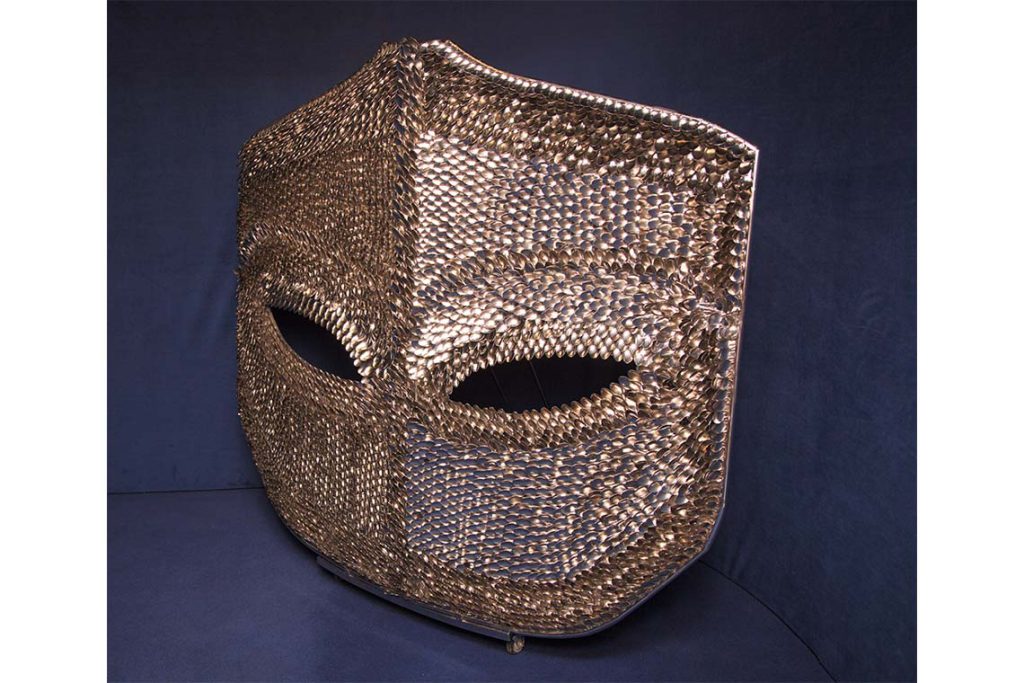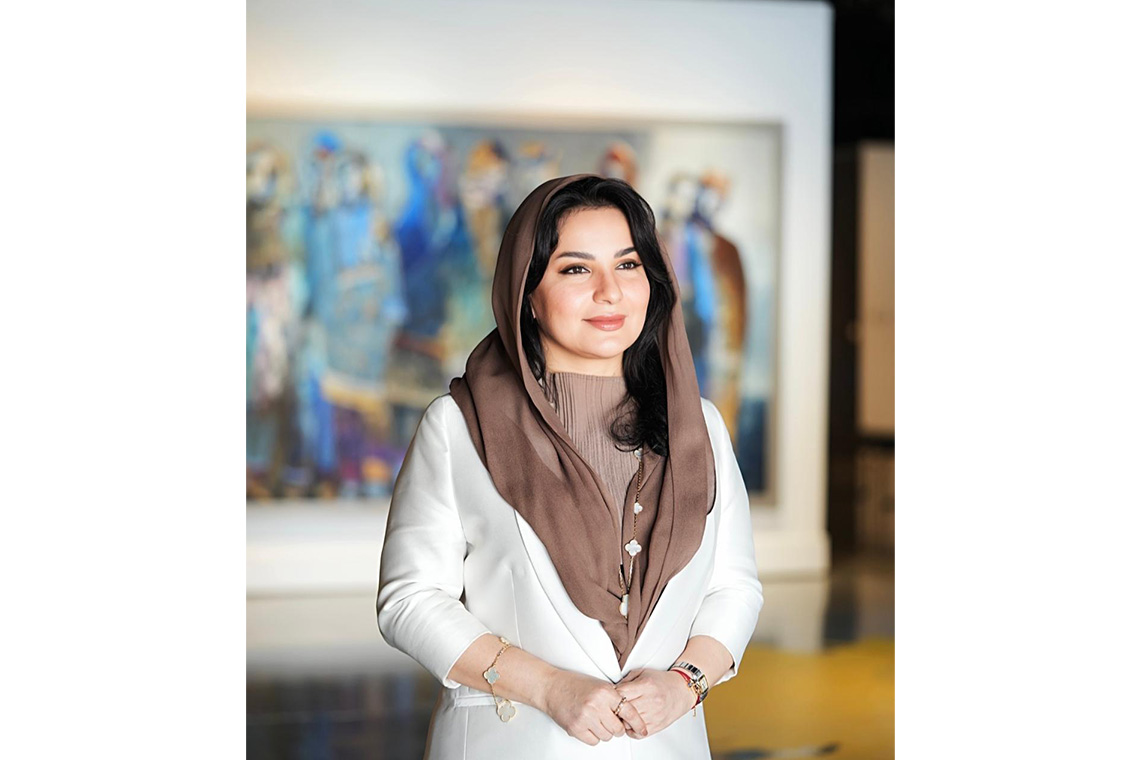Curator Alia Al Farsi explains the concept, process and objectives behind the works presented at this year’s Omani Pavilion.
Canvas: What inspired this year’s pavilion and the title, Malath – Haven? How does this relate to the Biennale theme of Stranieri Ovunque – Foreigners Everywhere?
Alia Al Farsi: In Arabic, malath means ‘safe space’, or a port where travellers can find comfort, peace and a sense of home. Drawing from the Sultanate of Oman’s centuries-long values of inclusivity and hospitality, the exhibition demonstrates the talent of local Omani artists, whose work reflects the country as a refuge to those seeking shelter and a sense of belonging. To relate specifically to the Biennale’s theme, we wanted to showcase the impact of multiculturalism on the country, guiding our work upon the core pillars that represent the immigrant experience – those of food, language, architecture, clothing and the arts.
Can you tell us about the works in the pavilion and how they represent Oman?
All the selected works embody the globalisation of Oman, depicting its multiculturalism and reflecting our art scene by mixing traditional concepts with contemporary expressions. Water by Dr Ali Al Jabri combines wood with local marble, demonstrating the fruits of Oman’s natural landscape and representing the journey of an immigrant in search of belonging. In Ali’s sculptures, each well is adorned with unique colours, symbolising diversity, while their bases remain uniform, representing our common origins as humans. As the sculptures ascend, they illustrate how societies and experiences shape us differently over time.
Sarah Al Olaqi took the concept of cherished family recipes to demonstrate the importance of food as solace and identity in Breaking Bread. The installation aims to evoke a sense of appreciation for the rich traditions of Omani women, preserving family recipes and quietly shaping the narrative of their lineage and their clothing, specifically the niqab. The use of spoons in the installation represents the transformation of ordinary utensils into a symbolic representation of cultural identity.

Sarah Al Olaqi. Spoonful of Tradition. 2024. © Sarah Al Olaqi. Image courtesy of the National Pavilion of the Sultanate of Oman, Venice Biennale
Essa Al Mufarji’s Madad unveils the subtle yet profound ways in which languages and terminologies are moulded by external influences. His installation is a testament to this nuanced understanding, presenting viewers with a display of Arabic calligraphy inspired by poetry crafted over a millennium ago, exploring themes of immigration and foreignness with timeless elegance.
Adham Al Farsi’s video work, The Fate of Outsiders, tells the tale of turtles as a metaphor for foreigners in life. Each screen shows the potential fates of these outsiders, one serene, the other depicting their unfortunate demise due to choosing the wrong path.
In my work, Alia’s Alleys, I wanted to transform my timeless cityscapes into an immersive journey, enveloping visitors in garments that symbolise the rich cultural tapestry of Oman and building a city where no one feels like a foreigner. It’s an inclusive place with a multitude of possibilities, which defines the country today and portrays it as a cherished home for all.
What curatorial approach did you take with a multi-artist exhibition and what was the process in the lead-up to the pavilion?
As curator, I saw a multi-artist show aligning seamlessly with the collective ethos of the theme Stranieri Ovunque – Foreigners Everywhere. Through a collective approach, we can underscore the interconnectedness and varied perspectives within our society, echoing the diverse tapestry of experiences.
I had a wonderful team that has proved to be incredibly reliable, advising and supporting the direction of the exhibition. Their contributions have been invaluable throughout the process, which is one that included constant dialogue with the artists in order to ensure that each pillar was succinctly representative of the theme. By delving into the history of foreigners in our country, we were able to create a multifaceted exploration of our society’s interconnectedness and diversity.
How does it feel to represent Oman at Venice?
It has been an honour and a privilege to curate the second edition of the Sultanate of Oman Pavilion at the Venice Biennale. Being an Arab and Omani artist and curator, my aim is to encourage exchange, experimentation and discussion that can help deepen our personal and national culture. I hope to demonstrate the richness and antiquity of our culture to a wider audience, while simultaneously tackling some of the stereotypes that can often be associated with it.

Adham Al Farsi. The Fate of Outsiders. 2024. Installation view. Photography by Asim Al Balushi. Image courtesy of the National Pavilion of the Sultanate of Oman, Venice Biennale
What opportunities and challenges arise when representing your country at Venice?
Participating in renowned global events such as the Venice Biennale presents a strategic opportunity for the Sultanate of Oman, a way to communicate its cultural richness and showcase its artists on a major international stage. Such exposure not only elevates the profile of Omani artists and fosters recognition and opportunities for collaboration, but it also serves to promote cultural tourism and nurture the artistic community in Oman.
Our presence here can also help change perceptions about the region’s cultural heritage. Many people may come into the exhibition with preconceived notions about Oman, so as artists we aim to introduce them to different aspects of our culture, traditions and artistry. By challenging these assumptions through our art, we will hopefully prompt audiences to rethink their perceptions of our country and recognise the value that our culture brings to the global art scene and international discourse.
With the extensive cultural history of Venice, how does it feel to add to the historical legacy of art in the city?
The opportunity to participate in such a globally renowned Venice Biennale allows our artists to showcase their cultural backgrounds and artistic identities, further enriching the diversity of the art scene. Omani artists can engage in meaningful exchanges with international talents, fostering creativity, collaboration, and cultural dialogue. This platform not only enables them to secure their deserved places on the global arts stage, but it also empowers them to share their perspectives on international issues through their unique practices and media.
What outcome would you like to see from the pavilion?
I hope that the artists gain better recognition for their work, leading to increased opportunities for them. More broadly, I would like the pavilion to contribute to demonstrating the different facets of Arab culture and the multitude of artistic gifts in the region, and specifically the diverse cultural hub that is Oman.
This interview first appeared in Canvas 113: Common Threads
The 60th International Art Exhibition – La Biennale di Venezia runs until 24 November 2024



